Did you know? |
Some oscilloscopes offer additional functions such as waveform generator, spectrum analyzer, logic analyzer, protocol analyzer, digital voltmeter and counter. Read more...
Latest Oscilloscope News |
Rohde & Schwarz adds eight-channel Oscilloscopes
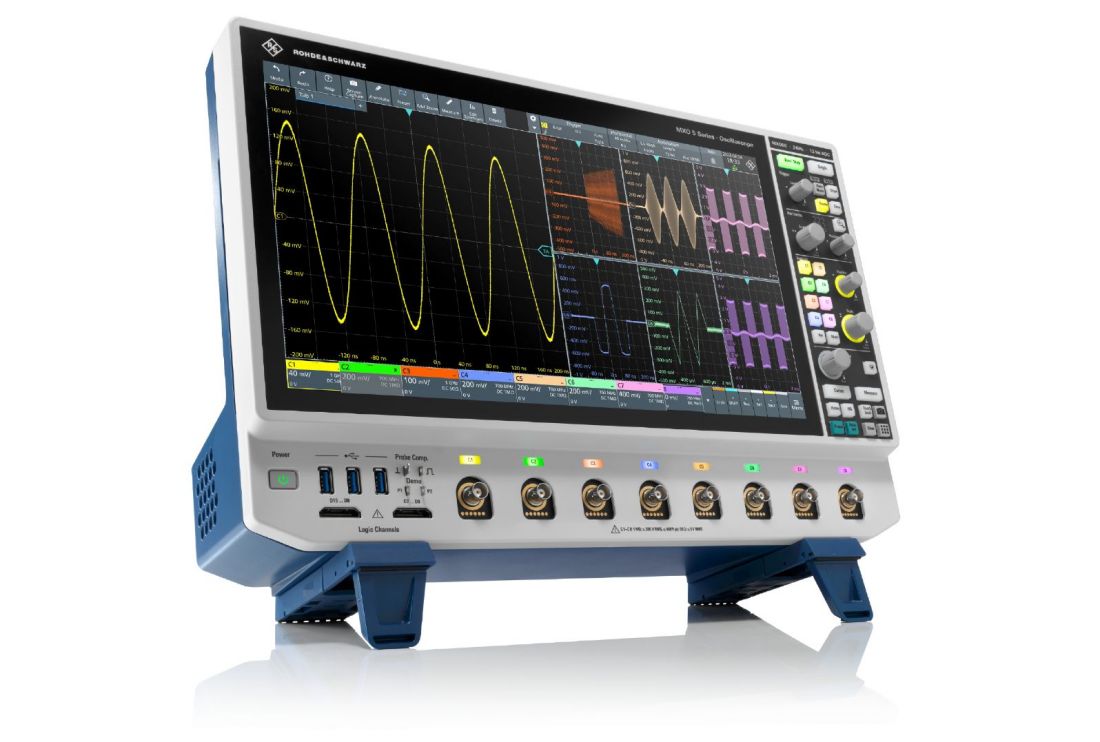 31 October 2023 — With the all-new R&S MXO 5, Rohde & Schwarz continues to evolve its series of next-generation oscilloscopes, started with the successful R&S MXO 4 in 2022. The R&S MXO 5 is the company’s first eight-channel oscilloscope. The new R&S MXO 5 oscilloscopes are available with four or eight channels. Building on next-generation MXO-EP processing ASIC technology developed by Rohde & Schwarz and introduced with the R&S MXO 4, the new eight-channel R&S MXO 5 oscilloscopes take measurement performance to the next level.
31 October 2023 — With the all-new R&S MXO 5, Rohde & Schwarz continues to evolve its series of next-generation oscilloscopes, started with the successful R&S MXO 4 in 2022. The R&S MXO 5 is the company’s first eight-channel oscilloscope. The new R&S MXO 5 oscilloscopes are available with four or eight channels. Building on next-generation MXO-EP processing ASIC technology developed by Rohde & Schwarz and introduced with the R&S MXO 4, the new eight-channel R&S MXO 5 oscilloscopes take measurement performance to the next level.
Oscilloscope Platform for Interconnect Technologies
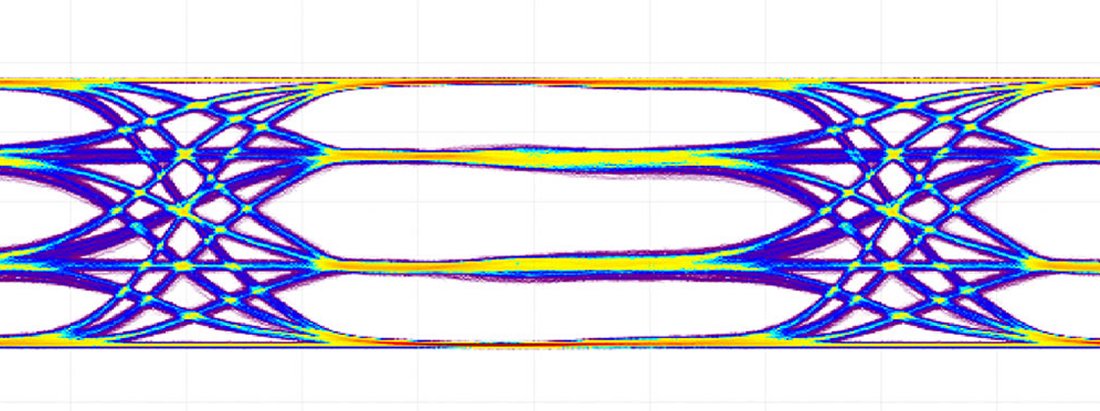 09 October 2023 - Quantifi Photonics, a photonics test and measurement instrument manufacturer, has announced a new line of digital sampling oscilloscopes to launch in 2024. Quantifi Photonics’ new oscilloscope platform is designed to offer cost-effective performance and enable manufacturers of next-gen interconnects to overcome the critical testing roadblock of scaling production to high volumes. With ultra-low jitter performance and unparalleled instrument density it is ideally suited to perform high-precision measurements in parallel for optimized test throughput and reduced cost-of test in high-volume manufacturing applications.
09 October 2023 - Quantifi Photonics, a photonics test and measurement instrument manufacturer, has announced a new line of digital sampling oscilloscopes to launch in 2024. Quantifi Photonics’ new oscilloscope platform is designed to offer cost-effective performance and enable manufacturers of next-gen interconnects to overcome the critical testing roadblock of scaling production to high volumes. With ultra-low jitter performance and unparalleled instrument density it is ideally suited to perform high-precision measurements in parallel for optimized test throughput and reduced cost-of test in high-volume manufacturing applications.
Economical 12-bit 2/4-Channel Oscilloscope Series
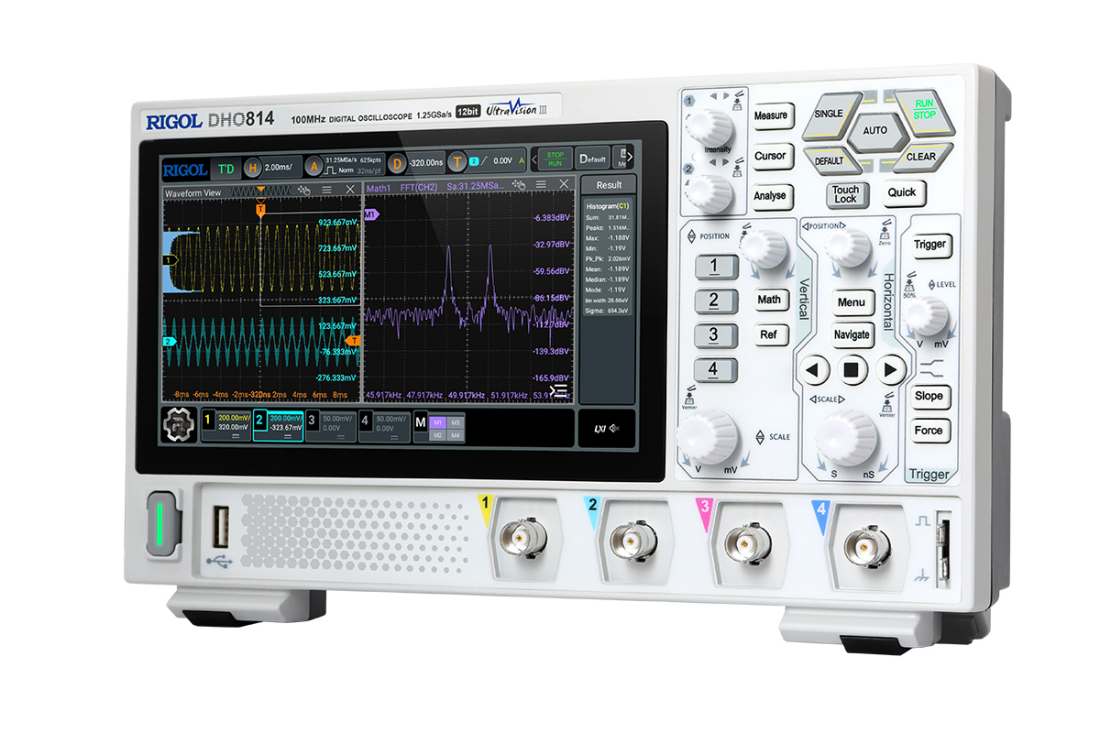 15 September 2023 - Rigol introduced the Rigol DHO800/900 Oscilloscope Series, new 12-bit economical digital oscilloscopes. The oscilloscopes are very portable and offer the high-resolution needed today, based on Rigol's "Centaurus" technology platform. With a capture rate up to 1,000,000 wfms/s (in UltraAcquire Mode), and 25/50Mpts memory depth, the ultra-low noise floor of these scopes allows the detection of even small signal details.
15 September 2023 - Rigol introduced the Rigol DHO800/900 Oscilloscope Series, new 12-bit economical digital oscilloscopes. The oscilloscopes are very portable and offer the high-resolution needed today, based on Rigol's "Centaurus" technology platform. With a capture rate up to 1,000,000 wfms/s (in UltraAcquire Mode), and 25/50Mpts memory depth, the ultra-low noise floor of these scopes allows the detection of even small signal details.
Hardware-Accelerated Oscilloscope with automated Analysis Tools
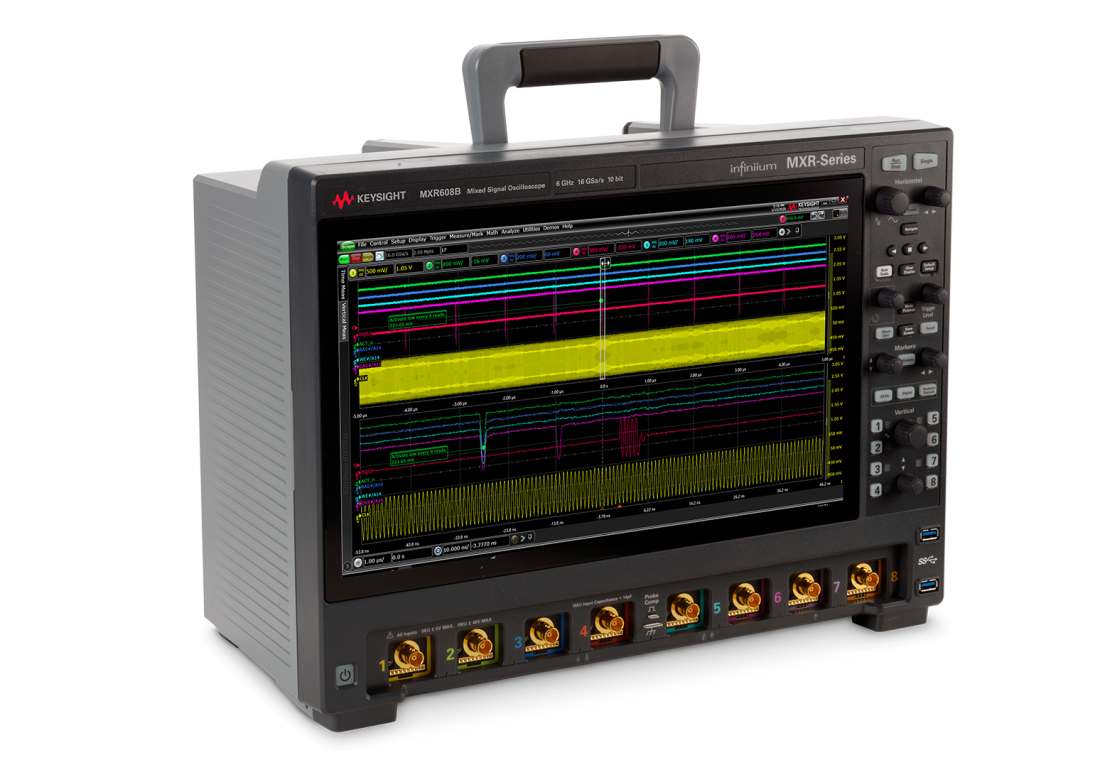 14 September 2023 - Keysight Technologies announced the expansion of its industry-leading portfolio of Infiniium oscilloscopes with the new, hardware-accelerated Infiniium MXR B-Series, offering automated analysis tools that enable engineers to find anomalies quickly and shorten time to market. Built-in, automated test tools and hardware-accelerated analysis produce results at least 60% faster than most competitors.
14 September 2023 - Keysight Technologies announced the expansion of its industry-leading portfolio of Infiniium oscilloscopes with the new, hardware-accelerated Infiniium MXR B-Series, offering automated analysis tools that enable engineers to find anomalies quickly and shorten time to market. Built-in, automated test tools and hardware-accelerated analysis produce results at least 60% faster than most competitors.
65 GHz Oscilloscope Platform with 12-bit vertical Resolution
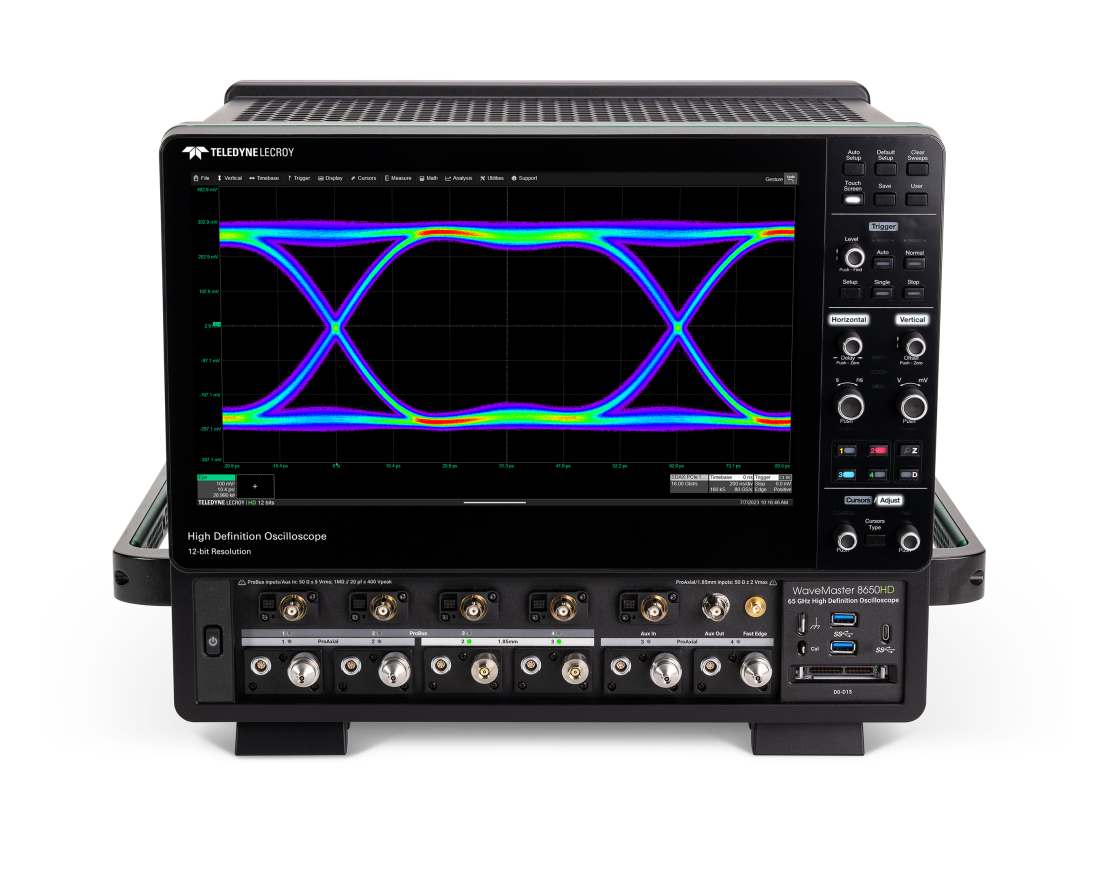 06 September 2023 – Teledyne LeCroy announced the launch of its new WaveMaster 8000HD high-bandwidth, high definition oscilloscope (HDO) platform with models from 20 to 65 GHz of bandwidth, 12 bits of resolution, up to 320 GS/s of sample rate and an industry-leading 8 gigapoints (Gpts) of acquisition memory. The new WaveMaster 8000HD retains the unrivaled validation and debug capabilities of its predecessor while adding new SDA Expert serial data analysis software options for testing next-generation serial data technologies.
06 September 2023 – Teledyne LeCroy announced the launch of its new WaveMaster 8000HD high-bandwidth, high definition oscilloscope (HDO) platform with models from 20 to 65 GHz of bandwidth, 12 bits of resolution, up to 320 GS/s of sample rate and an industry-leading 8 gigapoints (Gpts) of acquisition memory. The new WaveMaster 8000HD retains the unrivaled validation and debug capabilities of its predecessor while adding new SDA Expert serial data analysis software options for testing next-generation serial data technologies.
High Definition Oscilloscopes with up to 500 MHz Bandwidth
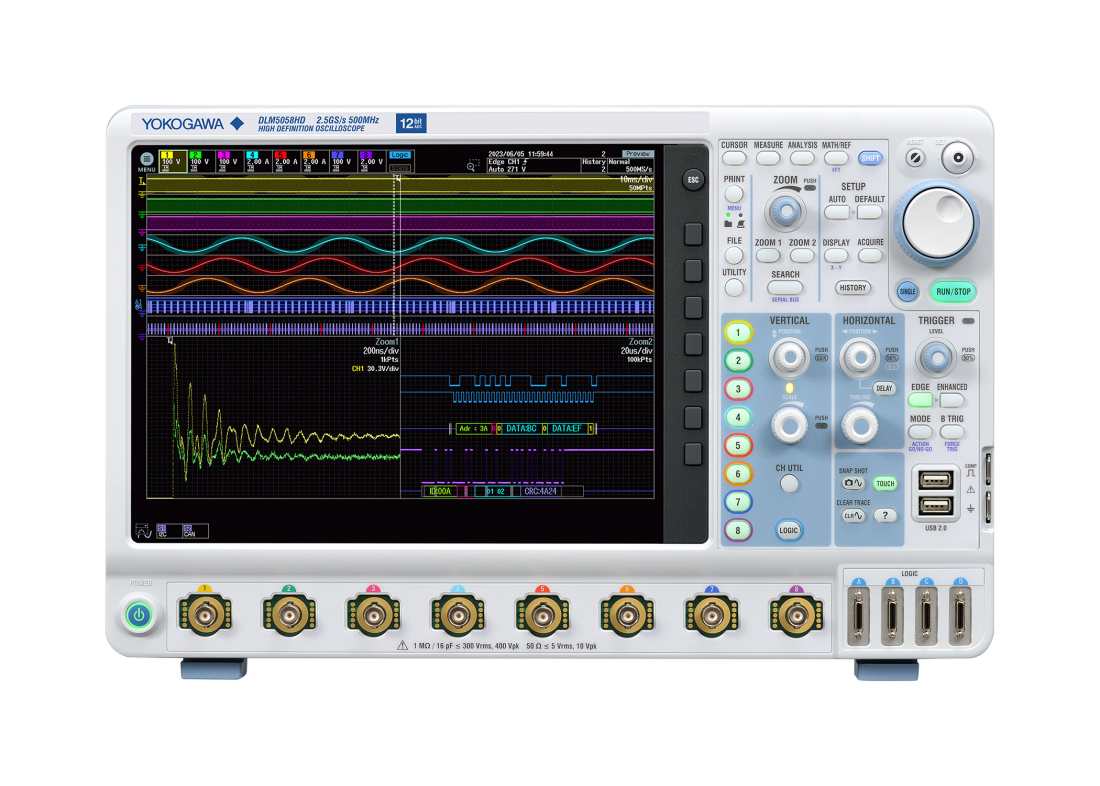 14 August 2023 - Yokogawa Test & Measurement Corporation released the DLM5000HD series high definition oscilloscopes. Positioned as a high-performance version of the DLM5000 series, the DLM5000HD series expands Yokogawa’s oscilloscope lineup with 500 MHz and 350 MHz frequency bandwidth models that deliver higher resolution for more accurate waveform analysis, and come with features that improve usability and enable easier setup.
14 August 2023 - Yokogawa Test & Measurement Corporation released the DLM5000HD series high definition oscilloscopes. Positioned as a high-performance version of the DLM5000 series, the DLM5000HD series expands Yokogawa’s oscilloscope lineup with 500 MHz and 350 MHz frequency bandwidth models that deliver higher resolution for more accurate waveform analysis, and come with features that improve usability and enable easier setup.
Handheld Digital Oscilloscopes enable floating Measurements
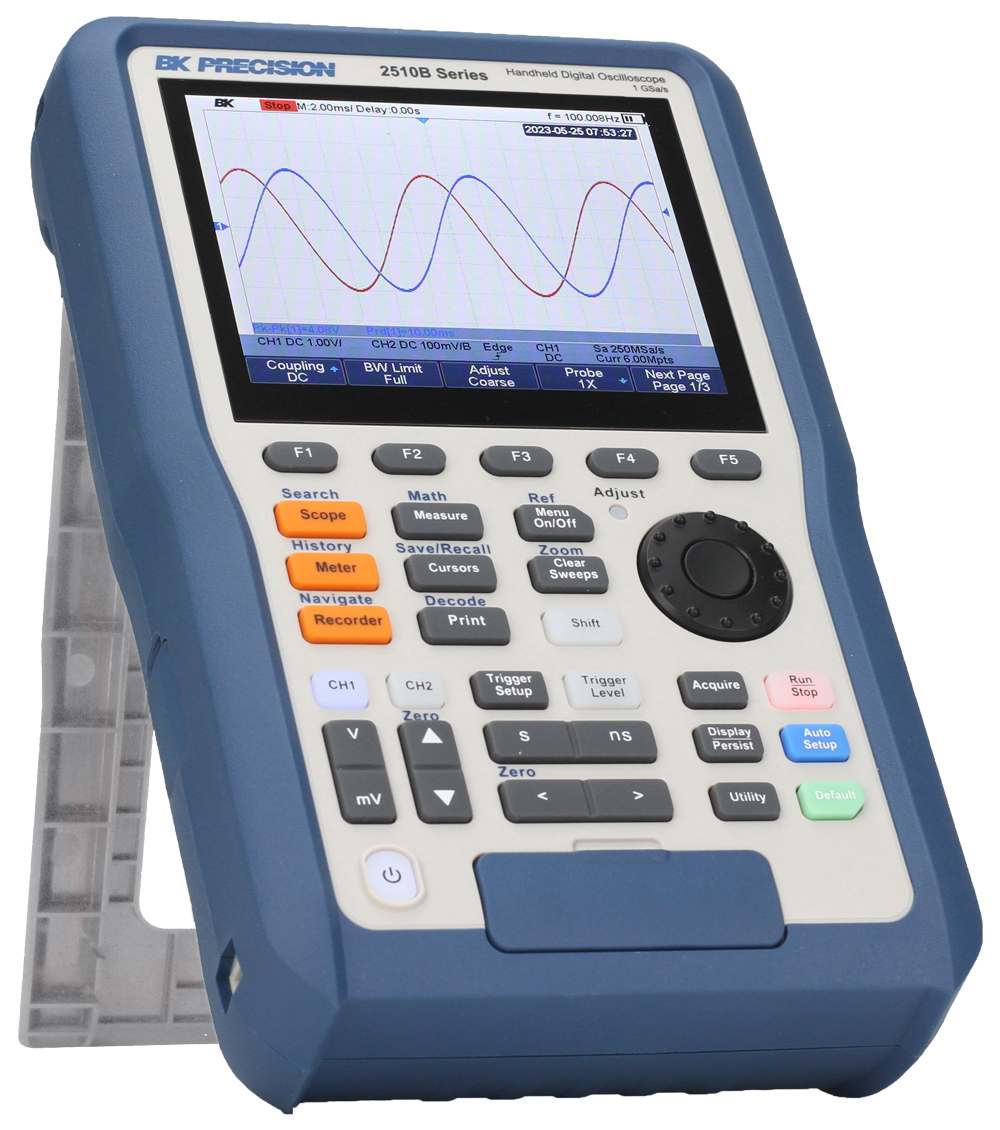 28 July 2023 - B&K Precision announced their latest iteration of handheld oscilloscopes, the 2510B Series. Comprised of four models, this new line of dual-channel oscilloscopes includes 100 MHz and 200 MHz bandwidth models. For industrial applications, the 2515B and 2516B provide full isolation between all inputs and safety ratings of 1000 V CAT II and 600 V CAT III. For general electronic applications, the 2511B and 2512B provide the same feature set in a non-isolated design and at a more affordable price point.
28 July 2023 - B&K Precision announced their latest iteration of handheld oscilloscopes, the 2510B Series. Comprised of four models, this new line of dual-channel oscilloscopes includes 100 MHz and 200 MHz bandwidth models. For industrial applications, the 2515B and 2516B provide full isolation between all inputs and safety ratings of 1000 V CAT II and 600 V CAT III. For general electronic applications, the 2511B and 2512B provide the same feature set in a non-isolated design and at a more affordable price point.
Oscilloscope Basics |
Digitizer and Oscilloscope - Equal Alternatives?
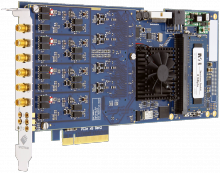 Can a digitizer be used as an oscilloscope? What is the difference between an oscilloscope and a digitizer? Should I better use a digitizer or an oscilloscope in my next application? These are interesting questions and the best way to start to answer these is the look up the dictionary definition of an oscilloscope: "An electronic instrument used to measure changing electric voltages. It displays the waveforms of electric oscillations on a screen."
Can a digitizer be used as an oscilloscope? What is the difference between an oscilloscope and a digitizer? Should I better use a digitizer or an oscilloscope in my next application? These are interesting questions and the best way to start to answer these is the look up the dictionary definition of an oscilloscope: "An electronic instrument used to measure changing electric voltages. It displays the waveforms of electric oscillations on a screen."
Oscilloscope Background |
Oscilloscope History and Milestones
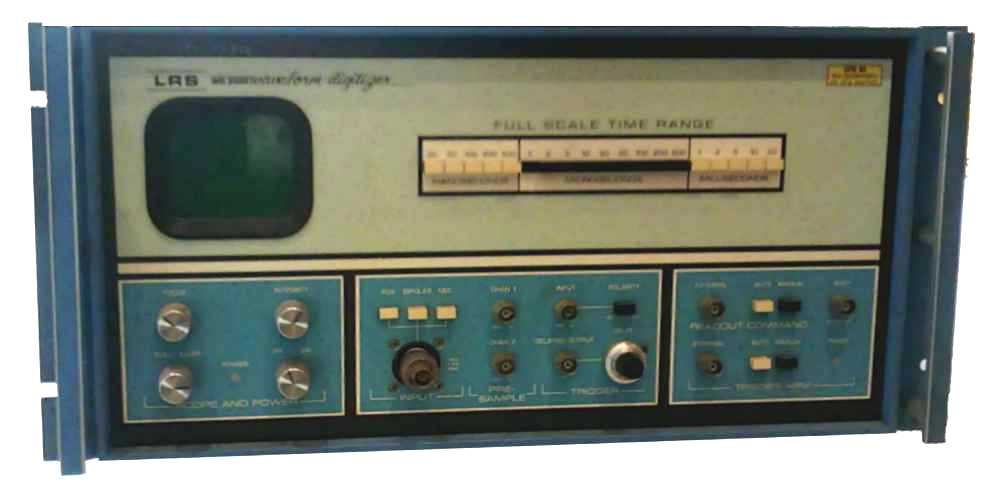 Oscilloscopes have been invented in the 1920s. Up to now this instrument encountered many innovations. In the beginning the most important manufacturers have been General Radio, DuMont, General Electric and Radio Corporation of America. Later Cossor and later Solartron dominated the market. Today the main players are Keysight, Tektronix and Teledyne LeCroy. Below we listed some important oscilloscope milestones.
Oscilloscopes have been invented in the 1920s. Up to now this instrument encountered many innovations. In the beginning the most important manufacturers have been General Radio, DuMont, General Electric and Radio Corporation of America. Later Cossor and later Solartron dominated the market. Today the main players are Keysight, Tektronix and Teledyne LeCroy. Below we listed some important oscilloscope milestones.

 How to resolve AdBlock issue?
How to resolve AdBlock issue?